
Nomenclature proposée pour les colonnes de feu tourbillonnantes
Par Patrick McCarthy et Leanne Cormier
Traditionnellement, les services de lutte d’incendies de forêt utilisaient le terme « tornade de feu » pour décrire les colonnes de feu de toute taille. Cormier (2013) résume l’étymologie du terme anglais firewhirl (tourbillon de feu) et mentionne certaines variantes comme fire devil (feu du diable), fire whirlwind (avec ou sans trait d’union) (vent d’incendie) et fire swirl (tornade enflammée). Il recense également de nouvelles versions, rendues populaires par les médias, comme fire tornadoes (tornades de feu) et firenadoes (tempêtes de feu). On trouve également sur les médias sociaux les termes ash devil (démon de cendres), pyronado (pyronade), pyro-tornado (pyrotornade), smokenado (tornade de fumée), smoke-nado et smoke funnel (entonnoir de fumée).
Cormier (2013), Lareau et coll. (2018) et autres reconnaissent que ces divers synonymes rendent mal l’ampleur et l’intensité des colonnes de feu. Goens (1978) a, quant à lui, proposé une échelle de grandeur croissante : feu du diable, tornade de feu, tornade enflammée et tempête de feu – proposition qui n’a pas communément été retenue.
Le terme météorologique normalisé pour désigner les nuages de feu est « flammagenitus », qui a récemment été proposé par l’Organisation météorologique mondiale (2020). Auparavant, dès 1991, les météorologues avaient commencé à utiliser, dans le langage parlé, le préfixe « pyro- » pour former les termes pyrocumulus (Ludlum, 1991) et pyrocumulonimbus (Crosby, 1993). Ces deux termes sont apparus dans la littérature au milieu des années 2000 (Fromm et coll., 2010), et à la fin de 2013, les deux termes ont été ajoutés au glossaire de l’Américan Meteorological Society (AMS) (2000d, 2000e). Les termes pyroconvection (Real et coll., 2007) et pyro-tornadogenesis (genèse de pyrotornade) (McRae et coll., 2013) ont ajouté à l’utilisation du préfixe.
La nouvelle nomenclature permet de définir scientifiquement l’ampleur des phénomènes atmosphériques associés aux incendies. Elle pourra également apporter constance et précision dans les recherches, les communications, la formation et l’éducation.
Extreme fire behaviour can manifest itself in many ways, violent tornado-like vortices being one example. On April 19, 2000, a large out-of-control fire at a major flax straw storage facility in southern Manitoba produced numerous vortices. One vortex emerged out of the inferno, tossing a pickup truck. One occupant was thrown to his death, while two others were injured (Globe and Mail, 2000). On May 22, 2015, a small water bomber fighting a wildfire near Cold Lake, AB, encountered a strong vortex, partially embedded in the smoke, causing the plane to roll over and crash, killing the pilot (Transportation Safety Board of Canada, 2016).

Figure 2 (right). Small pyronado during a stubble-burning near Fannystelle, Manitoba, Canada. The core funnel circulation at the base was about 5 to 10 metres wide, surrounded by a weaker smoke/ash/stubble-filled circulation. The funnel reached all of the way to the pyrocumulus (out of picture), about a thousand metres above. This pyronado broke away from the fire, persisting for many minutes. For a larger pyronado example, see Umscheid et al., 2006. Photos by Patrick McCarthy
Traditionally, the forest fire-fighting community has used the term “firewhirl” to describe fire-related vortices of any scale. Cormier (2013) summarized the etymology of “firewhirl” (sometimes “fire whirl”), noting variations such as “fire devil”, “fire whirlwind” (with or without a hyphen), and “fire swirl.” Cormier also found newer versions, popularized by the media, such as “fire tornadoes” and “firenadoes.” Among social media platforms, terms like “ash devil”, “pyronado”, “pyro-tornado”, “smokenado, “smoke-nado”, “smoke funnel,” were observed.
Cormier (2013), Lareau et al. (2018), and others have recognised that these various synonyms poorly capture the breadth of scale and intensity for fire-induced vortices. Goens (1978) attempted a scaled system, from smallest to largest: Fire Devils, Fire Whirls, Fire tornadoes and Fire Storm. That proposal was not widely adopted.
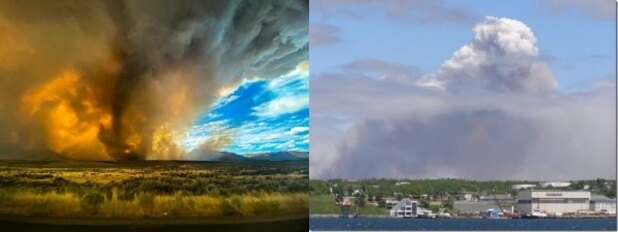
Figure 4 (right). Pyrocumulus over a forest fire near Porters Lake, NS, viewed from Halifax, June 14, 2008. Photo: Under CC Attribution-ShareAlike 2.0 License.
The accepted meteorological standard for fire-related clouds is the recently introduced term “flammagenitus” (World Meteorological Organization, 2020). Prior to that, meteorologists colloquially began to use the prefix pyro- as early as 1991, with “pyrocumulus” (Ludlum, 1991) and pyrocumulonimbus (Crosby, 1993). Those two terms began to appear in journals in the mid-2000s (Fromm et al, 2010) and by the end of 2013, both terms had been added to the American Meteorological Society (AMS) Glossary (2000d, 2000e). “Pyroconvection” (Real, et al, 2007) and “Pyro-tornadogenesis” (McRae, et al, 2013) expanded the use of the prefix.
With the meteorological community gradually adopting a more consistent approach to fire-related atmospheric phenomena, Cormier (2013) proposed a new standard nomenclature for fire-induced vortices; one that took into account the scales of traditionally-defined atmospheric phenomena:
- Firewhirl – small dust devil-like whirls in or near fires. They are small, short-lived and can be filled with a combination of fire, smoke, firebrands, or ash.
- Pyronado – persistent, tornado-like vortices in or near fire that extend hundreds of metres upwards from the ground, often (but not always) reaching the pyrocumulus clouds above. They are filled with a combination of fire, smoke, firebrands, or ash.
- Pyrotornado – large, violent, tornadic vortices in or near large vigorous fires. They are associated with large rotating pyrocumulonimbus firestorms.
- Pyrovortex – all-encompassing term for fire-related vortex phenomena.
Among the scale of atmospheric vortices, the term “whirl” seems to be the least threatening. The pyronado category is similar to the “landspout” in scale. It is also somewhat similar to the scale of a “gustnado”. Both terms are included in the AMS Glossary (2000a, b). The term pyrotornado has a larger, violent character.
Since Cormier’s original proposal, numerous large fire-induced vortices have been observed and documented. Often, dramatic videos and photos have been shared in the traditional and social media, piquing the public’s interest.
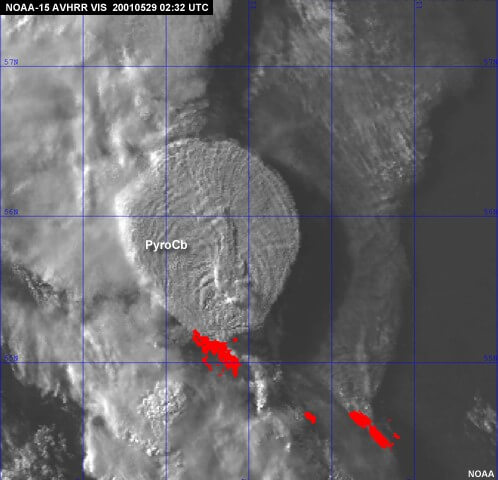
While the scientific naming of these terms may be intuitive to scientists, some of these names, particularly the long ones, may be cumbersome for the general public. The use of a hyphen after the pyro- prefix could more clearly distinguish the root word.
Cormier mentioned “firestorm” in the original proposal, and referenced a number of highly destructive historic events. The word remained off that scale since it was a very complex phenomenon. It may include one or more pyrotonadoes, similar to a large, violent supercell producing a wide swath of destruction. Recent research (e.g. McCrea et al, 2013, and Lareau et al, 2018) indicate that firestorms have a large mesoscale circulation. The AMS Glossary (2020c) defines a mesocyclone as “a cyclonically rotating vortex, around 2–10 km in diameter, in a convective storm.” This is similar in scale to recorded firestorm events, such as the October 8, 1871 Peshtigo, Wisconsin, firestorm that killed an estimated 1200-2500 people (Gess & Lutz, 2003). Therefore, “pyromesocyclone” (or pyro-mesocyclone”) could define these large cyclonic fire events.
A modified and expanded version of the Cormier fire vortex-related nomenclature is proposed:
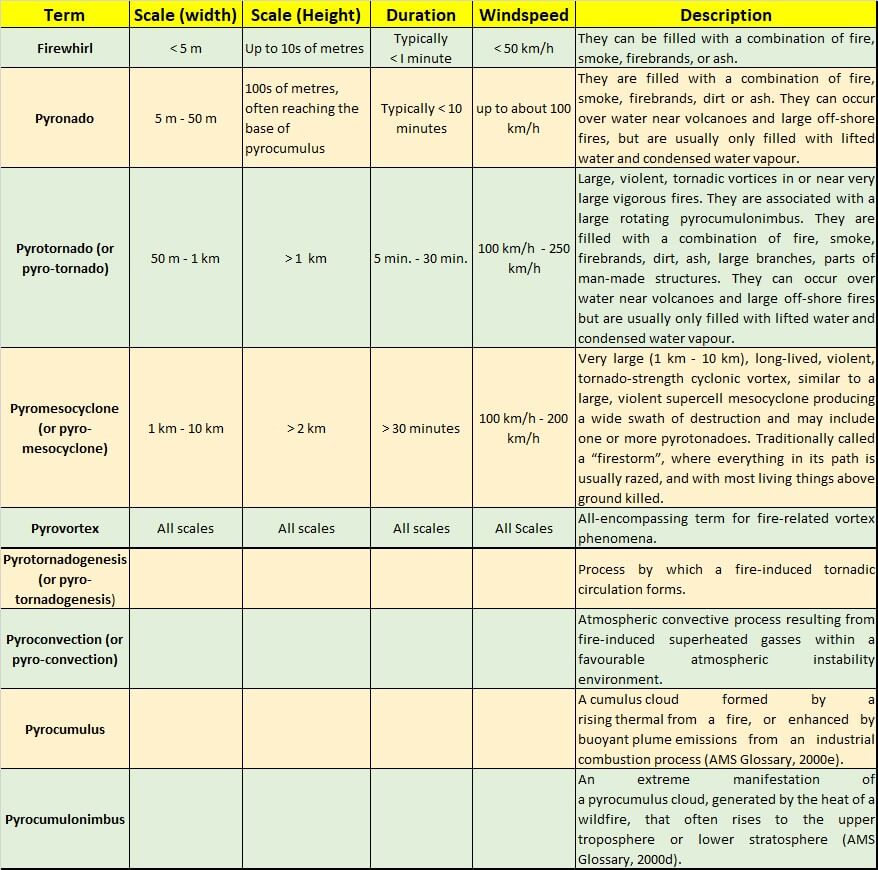
The new nomenclature provides a scaled scientific approach to fire-related atmospheric processes. In addition, consistency in research, and clarity in messaging, training and education could also be achieved.
About the Authors
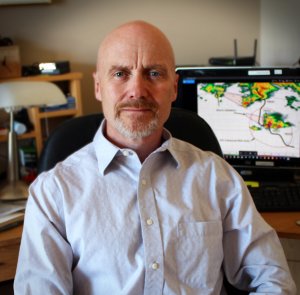
Patrick McCarthy is a retired Meteorological Service of Canada (MSC) meteorologist. He began his career working with the Alberta Weather Centre as a summer student in 1984; working with their severe weather program over five summers. After becoming an operational meteorologist for MSC in 1989, he spent two years in Gander, NL. He was transferred to the Prairie Weather Centre in Winnipeg and came a severe weather specialist. He ended his career as Head of the Prairie and Arctic Storm Prediction Centre. He remains passionate about weather and is an active storm chaser.
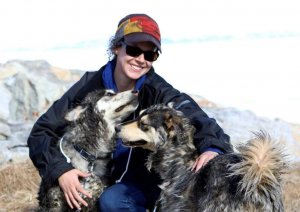
Leanne Cormier studied at the University of Manitoba in 2013, graduating with a Bachelor of Science degree specializing in Atmospheric and Hydrological Sciences. She now works at Environment and Climate Change Canada as a Meteorological Technologist fixing weather stations all over Manitoba and Nunavut and maintaining various networks. When not flying to the Arctic, she enjoys working on building her tiny house on wheels with her husband Steve and relaxing with their two cats, Oscar and Elliot.
References
- American Meteorological Society, cited 2020a: gustnado. Glossary of Meteorology. [Available online]
- American Meteorological Society, cited 2020b: landspout. Glossary of Meteorology. [Available online]
- American Meteorological Society, cited 2020c: Mesocyclone. Glossary of Meteorology. [Available online]
- American Meteorological Society, cited 2020d: Pyrocumulonimbus. Glossary of Meteorology. [Available online]
- American Meteorological Society, cited 2020e: Pyrocumulus. Glossary of Meteorology. [Available online]
- Cormier, L. (2013). Vertical transport of biomatter in pyronadoes and its implications for tornado detection. Honours Thesis, University of Manitoba, Winnipeg.
- Countryman, C. M. (1971). Fire whirls…why, when, and where. Forest Service, U.S. Dept. of Agriculture. Berkley: U.S. Government Printing Office. [Available online]
- Crosby, B. (1993). War in our forests. Sunset, Sunset Publishing Co., Menlo Park, California, July 1993, p.66. [Available online]
- Cunningham, P. & M.J. Reeder (2009). Severe convective storms initiated by intense wildfires: Numerical simulations of pyro-convection and pyro-tornadogenesis. Geophysical Research Letters, 36, L12812. https://doi.org/10.1029/2009GL039262
- Fromm, M., D. T. Lindsey, R. Servranckx, G. Yue, T. Trickl, R. Sica, P. Doucet, and S. Godin-Beekmann, 2010: The Untold Story of Pyrocumulonimbus. Bull. Amer. Meteor. Soc., 91, 1193 –1210.https://doi.org/10.1175/2010BAMS3004.1
- Gess, D. & Lutz, W. (2003). Firestorm at Peshtigo: A town, its people, and the deadliest fire in American history. Henry Holt and Co.
- Goens, D. W. (1978). Fire whirls. National Weather Service, NOAA Tech. Memorandum NWS WR-I29. [Available online]
- Lareau, N.P., N.J. Nausler, & T.J. Abatzoglou (2018). The Carr fire vortex: A case of pyrotornadogenesis? Geophysical Research Letters, 45. https://doi.org/10.1029/2018GL080667.
- Ludlum, D.M. (1991). National Audubon Society field guide to North American weather. National Audubon Soc., Alfred A. Knopf, New York, p. 546.
- McRae, R. H. D., J. J.Sharples, S. R.Wilkes, and A. Walker, 2013: An Australian pyro-tornadogenesis event. Nat. Hazards, 65, 1801–1811, https://doi.org/10.1007/s11069-012-0443-7.
- Real, E. & Law, K. & Weinzierl, Bernadett & Fiebig, M. & Petzold, Andreas & Wild, Oliver & Methven, John & Arnold, S.A. & Stohl, Andreas & Huntrieser, Heidi & Roiger, Anke & Schlager, H. & Stewart, D.J. & Avery, Melody & Sachse, G.W. & Browell, Edward & Ferrare, R. & Blake, D. (2007). Processes influencing ozone levels in Alaskan forest fire plumes during long-range transport over the North Atlantic. Journal of Geophysical Research. 112. 1-19. https://doi.org/10.1029/2006JD007576.
- Umscheid, M. E., Monteverdi, J. P., & Davies, J.M. (2006). Photographs and analysis of an unusually large and long-lived firewhirl. Electronic J. Severe Storms Meteor., 1,(2). https://www.ejssm.org/ojs/index.php/ejssm/article/viewArticle/6/11
- Wood, V. T., 1992: Whirlwind Formation at a Burning Oil Supertanker in the Gulf of Mexico. Mon. Wea. Rev., 120, 371–372, https://doi.org/10.1175/1520-0493(1992)120<0371:WFAABO>2.0.CO;2.
- World Meteorological Organization, cited 2020. Cumulus flammagenitus. International Cloud Atlas. https://cloudatlas.wmo.int/en/flammagenitus.html
Did you enjoy this article? Subscribe here to get the latest from the CMOS Bulletin!
More Like This
Extreme 2014 wildfire season in the Northwest Territories
Did Anthropogenic Climate Change Increase the Chance of an Extreme Wildfire in the Fort McMurray Area?
feu du diable, Leanne Cormier, Patrick McCarthy, tornade enflammée